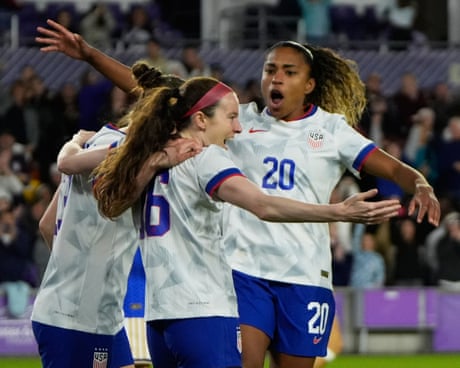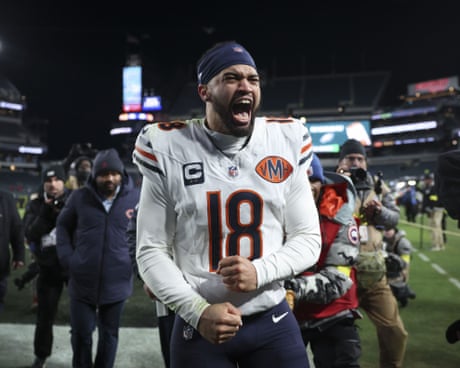
You’ve got mail.
We’ve got answers.
In this week’s Maple Leafs Mailbag, we examine the ramifications of the Mikko Lehtonen signing on the rest of the defence corps, why the NHL’s salary cap should stay flat (albeit artificially), the European roster advantage and some reasons behind the greatest trade mistake in modern Toronto Maple Leafs history.
Pen pals unite!
Where do you think Lehtonen fits on the team next year? Does this mean the end of Dermott as a leaf?
— Jordan Maresky (@jordan_maresky) May 6, 2020
“With regards to Mikko and where he fits in,” general manager Kyle Dubas said, “you want to really work towards his strengths and what he does best and fit that into our program.
“With regards to whether he’ll play the left and right side, it’s such a hard thing to answer right now. It would be easier if our season was over and we knew more about where we were at. But I think we want to hopefully get back and finish our season and evaluate things from there that determine whether we want to try him on both sides, but I think the versatility certainly helps.”
Lehtonen, a left shot, played the full 2018-19 season in the Swedish Elite League on the right side, and said upon his signing he sometimes prefers it.
Yet Lehtonen’s best and most recent work has been conducted on his strong side, leading us to bet he’ll start as the third-pairing left shot and operate the point on the second power-play unit, with Tyson Barrie signing elsewhere.
We don’t see Lehtonen supplanting Morgan Rielly or Jake Muzzin on the left side in the top four. Both prefer their strong sides and have earned their roles. Lefties Rasmus Sandin and Travis Dermott were both given a healthy share of shifts on their weak side while developing with the AHL’s Toronto Marlies in recognition of the organizational soft spot. Both are willing to do whatever it takes to stick.
While it’s possible Dubas dangles Dermott in a trade, I think the smart play is to re-sign him. The RFA didn’t have a monster platform campaign. He loves it here, and he doesn’t have arbitration rights. Plus, a flat salary cap won’t do much for Dermott’s negotiating leverage.
Signing Dermott to a reasonable bridge deal also guards against the kind of injury trouble that besieged the 2019-20 Leafs’ blue line.
We still believe Dubas will try hard to sign or trade for a natural right shot to join Justin Holl in the top four, whenever the off-season is upon us. If that fails or injuries arise, perhaps Lehtonen does get some looks on his weak side next to Muzzin or Rielly.
What is the value of having Europeans on the current roster when signing international players? Kapanen/Lehtonen, Mikheyev/Barabanov, etc.
— Mitch (@Mitch221006) May 6, 2020
It’s a bonus, for sure.
It’s not uncommon to spot buddies Andreas Johnsson and Pierre Engvall chatting Swedish in the dressing room, and countrymen Rasmus Sandin and William Nylander grew tight before the defenceman jumped to the show.
Upon his signing, Lehtonen mentioned some familiarity with the younger Kasperi Kapanen, although he’s much tighter with Colorado Avalanche star Mikko Rantanen.
Ilya Mikheyev and Alexander Barabanov share the same agent, Dan Milstein, and I’m sure Mikheyev — diligent in his efforts to learn English — will welcome the idea of someone to speak with in his own language.
“It’s not an easy transition for a European player, in particular for a Russian player that doesn’t speak English,” coach Sheldon Keefe said. “We’re very fortunate here that we’ve got a lot of experience in the Maple Leafs organization with players in similar circumstances to make that transition. That really is on us to really help that transition as best as possible, but I think all the different experiences that players and their families go through allow it to be seamless. That is on us to help that happen and help get it to a point where he can just be himself and play as quickly as possible.”
Keefe gives a nod to the development role Nik Antropov plays in the organization.
“We started to have Nik around more just to help with Mikheyev,” Keefe said, “and we think the Barabanov situation is going to be very similar to that. We think he’s going to be a very important piece to the team. Certainly, adding Antropov and his presence is another step this organization is taking to ease that step and transition period.”
Salary cap for 2021 what u think ?
— knight (@sule114) May 6, 2020
The salary cap for 2020-21 should remain flat at $81.5 million, and I’d imagine it’ll stay there for 2021-22 and possibly 2022-23 as well. The league will need plenty of time to recover from the economic damage of the pandemic, but NHL Commissioner Gary Bettman and Donald Fehr, executive director of the NHLPA, shouldn’t punish clubs by lowering the ceiling and forcing GMs to trade or buy out players they want to keep.
“Neither man has any interest in ruining hockey teams around the NHL. If we were to take things literally, you’d probably have 28 teams that would really have to dismantle. There would be 28 sellers and not enough buyers,” Leafs president Brendan Shanahan explained on Tim and Sid. “We’re going to want to be coming back strong. We’re going to want to come back to our fans with all of our star players that we’ve assembled.
“I’m hopeful that whatever the cap is today, it remains. I’m actually more than hopeful. I’m confident that the league and the union will find a way to make that happen.”
So, it’ll be an artificial cap — as was the case coming out of the 2012 lockout. That means the players won’t be taking home the money listed on their CapFriendly profiles. They’ll either be giving huge chunks back in escrow or agreeing to a salary rollback plan in the next CBA.
Does sandin and liljegren make the team in 20-21?
— Shawn Pellerin (@pellerinshawn) May 6, 2020
Yes, and maybe.
The Lehtonen signing and the likelihood of a right-shot addition should certainly jack up the competition for spots, but in my eyes, Sandin is ready for a permanent jump to the NHL — even at age 20. That he’s happy to play his weak side helps his case for sticking.
Timothy Liljegren could go either way. His 11-game call-up in 2020 was necessitated by a rash of injuries and felt purely like a trial run. Because he was selected a year and 12 spots earlier than Sandin, fans tend to forget he’s only 21. There’s a ways to go here in a development trajectory that has been set back by multiple injuries and, now, a frozen season.
Despite being used in sheltered NHL matchups and starting 54 per cent of his shifts in the offensive zone, Liljegren’s numbers weren’t so hot: no goals, one assist, two shots, minus-5, 44.2 Corsi For percentage.
Like the rest of us, Liljegren is a work in progress. He’ll need to shine in training camp.
Who finishes with more points next season….Nick Robertson or Pierre Engvall?
— Shug McSween (@ShugMcSween) May 6, 2020
Nick Robertson.
why did the leafs trade rask for raycroft?
— Donnie Brasco (@official_brasco) May 6, 2020
John Ferguson, Jr.’s decision to deal first-rounder Tuukka Rask for Andrew Raycroft at the 2005 NHL Draft was the most regrettable move since Ron Burgundy leaped into the grizzly bear exhibit.
But Toronto’s former GM had his reasons. For starters, Raycroft was the reigning Calder Trophy winner. Seemingly a star on the rise, Raycroft’s sparkling .926 save percentage in 2003-04 had also earned the goalie some Hart Trophy votes. Who knew his first season would be his best?
Moreover, Ferguson had been eyeing Raycroft since he was director of player personnel for the Blues at the 1998 draft. Boston nabbed him a few picks earlier, at 135. At the ’05 draft, there were other teams rumoured to be targeting Raycroft, so competition was high. (Phoenix was reportedly ready to offer a second-rounder.)
JFJ also owned the rights to another blue-chip goalie of the future in Justin Pogge. A young Rask — who got outperformed in Finland by Raycroft during the 2004-05 lockout — felt redundant on his depth chart, and Ed Belfour was getting old.
The GM wanted to win sooner than later. He guessed wrong.
NHL players’ personalities have emerged during this quarantine. Do you think we will see more fan interaction type of content once the “normal” world resumes?
— Mikey (@mikeylaz1) May 6, 2020
I’m with you, Mikey. The guard-down personality coming from the players — be it through social media, podcasts, or Zoom calls — has been a rainbow in these cloudy times.
They have more free time than ever. They’re in a relaxed setting. There is no game to prepare for. No p.r. rep hovering, hoping for clichés.
“It’s been unbelievable. There’s a willingness — and, of course, it’s unique to having time and being home — and an interest to step out of what would normally be the box players are in, to get out there and want to be engaging and want to talk to fans, and want to entertain a little, or message a little,” Steve Mayer, the NHL’s chief content officer, told me.
“We all know there’s a measure of being slightly guarded during the regular season. Now, you’re at home. It’s a more relaxed situation. The kids are running around. We relax.”
Will players reach quite this same level of loose engagement when normalcy returns? I doubt it.
Has this great equalizer encouraged the rich and famous realize that it’s OK — heck, even fun — to let down their guard a little more often? To be a bit more silly or casual or spontaneous or opinionated? I think so.




